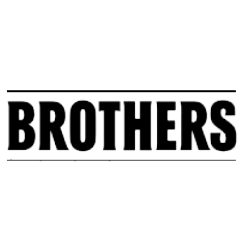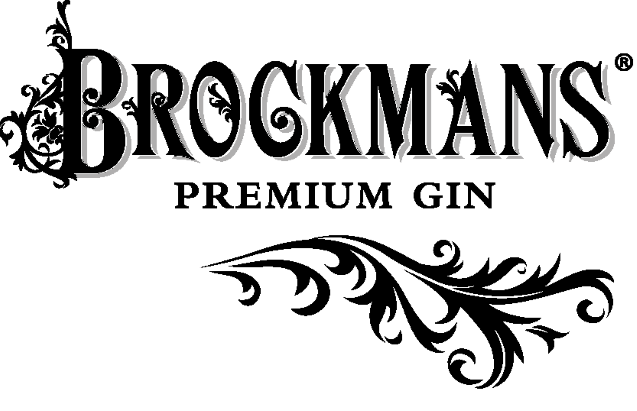Q&A: DAVID CUNNINGHAM

“This week, Cesium Group – in association with the drinks business – sat down with David Cunningham, Programme Director for There’s a Beer for That.”

David Cunningham, programme director, There’s a Beer for That
The campaign – funded and supported by Britain’s Beer Alliance of global, regional and craft brewers – seeks to promote education in the beer category among consumers, the on-trade and the off-trade by demonstrating the quality, diversity and versatility of beer.
David spoke to Paul Haslam, managing director of drinks headhunter Cesium Group, to talk about the collective effort to reignite Britain’s love of beer. See below for the full transcript.
The interview comes ahead of the drinks business‘ coverage of the latest Cesium Thought Leadership event on the latest trends in the beer industry.
With input coming from a panel of the UK’s leading figures in the beer trade, the piece will appear in the February edition of the magazine.
Paul: Could you give me an overview of Britain’s Beer Alliance as an organisation and its key objectives?
David: Britain’s Beer Alliance was set up beginning in 2014. It is a broad industry alliance, as the name suggests, made up of global, regional and craft brewers as well as industry bodies including SIBA [Society of Independent Brewers], British Beer and Pub Association, Cask Marque, as well as Pub Cos – big and small.
As that description shows, the industry is fragmented and diverse and the purpose behind Britain’s Beer Alliance was exactly this: it was a way of uniting the industry behind a single campaign and a shared goal to reignite Britain’s love of beer grow the whole category.
But it was also driven by consumer insight. When I first came on board, we undertook some research to discover what the barriers to growth in beer were. One of the insights that came from this was that consumers not only wanted to know who was behind the campaign, but also that they found it very motivating to know that the industry was getting together to promote the whole beer category.
Britain`s Beer Alliance plays two roles. It helps unite the industry and it clearly demonstrates that the whole industry is behind this campaign.
We currently have 85 members, including global, regional & independent brewers, BBPA, SIBA, Pub Cos. All in all, the membership represents about 90% of the beer industry, so it’s a pretty wide group of people behind this campaign.
Paul: What were the key objectives that you set out to achieve?
David: Our objective is to reignite Britain’s love of beer. Although beer is still the nation’s favourite drink, there is a lot competition from other drink categories and we identified that the overall category was stagnating. We recognised that Britain was falling a little bit out of love with beer and the category needed to be reinvigorated We needed to get people to think differently about beer. We needed to communicate different messages about beer and adopt a new body language and approach to how we communicated with people.
We undertook extensive research – north & south with old and young consumers, male and female, beer experts and beer novices and we consistently found that there were three key barriers to growth:
The first was that beer was seen as lower quality than other alcoholic drinks, specifically wine and cider. People didn’t understand the natural ingredients that went into beer, the goodness of beer and the fact that the majority of beer is brewed in the UK.
The second barrier to growth was that beer was seen to be a bit homogenous and bland. There wasn’t a good understanding of the huge variety of styles, flavours and tastes.
The third barrier was that beer was perceived overall as being narrower than other alcoholic drinks – narrower in terms of the people that were drinking and enjoying beer and narrower in terms of suitable occasions for beer – it was very much associated with sport, after work and lads’ night out – all of which are fantastic opportunities, but beer wasn’t seen to be a drink that was appealing beyond those occasions.
Having identified these barriers, we decided that the campaign needed to address them head-on. We decided that we needed to show people that actually there’s more to beer than they currently thought – more to how it’s made; the natural ingredients, the quality and goodness of beer and the craft of brewing. There’s more to the variety of styles, flavours, and tastes, and more occasions where beer could be enjoyed and by more people.
‘There’s more to beer’ became our core proposition. That led to the creative idea that whoever you are – male or female, old or young and whatever the occasion, big or small, outdoors or indoors, on-trade or off-trade and whatever the food, there’s a type of beer that’s perfect for you and that moment. This naturally led us to There’s A Beer For That. It became a great encapsulation of the strategy that was very easy to understand and a nice strapline that we believed people would remember and use. This led to the creation of There’s a Beer for That as our industry campaign.

Paul: Which is brilliant. It captures the food-pairing bit and it captures the occasion piece.
David: Yes. A lot of what we do talks about beer and food as it allows us to tap into new occasions, and talk about beer in a different way.
Paul: Some of the barriers that you touched on around taste and quality are interesting. There seem to be some key drivers of the renaissance in beer: quality, diversity, taste and versatility. Could you share some of your thoughts on how that fits into the work that you’ve been doing and why they’re central pillars to the campaign?
David: I think there are common themes – those are the desire for more taste, provenance, authenticity and interest in locally produced food & drink If you look at where the growth in beer is, it’s not just exclusively craft beer. There’s also some fantastic growth in regional breweries and regional ales and cask ales, and there’s also some good growth in some international brands e.g. Peroni, Pilsner Urquell and San Miguel. They’ve got the same thing in common, taste authenticity and provenance. There are brands that have been talking to people in a different way.
A few years ago many brands were focused on beaches, blokes, bikinis and barbecues, but the world moves on and the category has to move on too – we have to adjust and adapt our messages accordingly to be relevant to new occasions and new drinkers.
The key communication platforms of our campaign — quality, diversity, and versatility, are important and universal themes that we the whole industry supports and is getting behind.
Paul: The quality and diversity points I think are self-explanatory to a degree. The versatility point, is that around broadening out occasions? Can you help me understand that?
David: Broadening the appeal and relevance of beer to occasions outside of the current ones is undoubtedly an important part of our campaign – enjoying a beer with food in and out of home is one of the key opportunities, but there are others too. In addition, we think that beer should be much more inclusive and be as appealing to women as it is to men. We believe messages about the quality of beer, the diverse styles, flavours and taste and the versatility of beer, can be as relevant to women as men. Women are important not just as drinkers, but they are often the gatekeepers to occasions where men and women are drinking together and they will often influence the choice of drink.
Paul: Building on that, a lot of the above-the-line and TV commercial work that you’ve done has been around the pairing with food. How effective do you feel that that’s been as a platform? It must be a difficult message to try and communicate with the on-trade.
David: Beer and food is a critical part of our campaign and certainly forms a central message within our TV, Cinema and Outdoor poster advertising. However, our campaign goes beyond food. Our social and digital programmes is not only focused on the food occasion, but also other occasions where beer can be the perfect drink. Our programmes in the on-trade and off-trade do naturally focus on beer and food, so the programmes we have activated with Waitrose and Tesco and Sainsbury’s all orientate around food. We have identified a real desire for shoppers to know more about beer styles and how these beers taste and to educate them on what styles of beer pair well with different recipes.
In the on-trade we have developed two programmes focused on food. The first is ` Dine with Beer`, which is a bespoke menu of food with suggested beer pairings. The second is `Beer Club` where we co-host an evening in a pub, over a great meal paired with great beers and we will educate drinkers about the history of beer, different styles and tastes and how they pair with different recipes.
We have also developed a Beer Festival programme for pubs and occasions where food is not the main focus. The main aim is to educate drinkers about the different styles of beer and their tasting notes and to encourage them to try something different.
But coming back to beer and food, it is a real opportunity. The trend towards casual dining is increasing. Beer is an excellent accompaniment with food and I would argue is actually better than wine as it not only offers a huge variety of styles and tastes that can complement or contrast with different food to heighten the whole experience but also refreshes and cleanses your palate .
In terms of our results, we have driven and delivered some very strong results. We’ve seen a step change in consumer`s attitude towards beer. We have identified 5-6 key beer image attributes that we need to change over time. These include high quality, perfect drink with food, suitable for women and men etc. All of these attributes have seen a positive improvement over the course of the campaign. Attitude change is a start to behavioural change. Behavioural change is slightly more difficult and requires longer to impact. But we’ve already started to see some signs of behavioural change and we have seen an increase in number of food occasions where beer is consumed.
The ultimate test of success is category growth. It is always difficult to prove a direct impact at total category level because there are so many influencing factors, but we are experiencing the first growth in the total category for over nine years. I think this shows that the campaign is contributing to the overall momentum and renaissance in beer.
Paul: Craft beer is largely focused in London and some of the key urban cities around the UK – Leeds, Manchester, Bristol. Is this a trend that is rolling out nationally? Is the industry talking to a broader consumer group in the right way?
David: I’m passionate about this issue and I think it’s a bit of a ‘watch-out’ for us as an industry. I think we have to be careful that some of trends we’re observing are currently only happening in cities not everywhere in the UK. There`s still a huge amount of work to be done to broaden the education about beer, beyond the Hoxton hipsters and community of beer experts to the broader, more mainstream beer drinkers living in cities and elsewhere. We need to communicate new messages to them and get them to think about beer in a different way. We have only just started on this. We’ve got to be careful that we don’t think the job is done and that these messages have reached the broader consumer yet.
I think the wine industry, where I’ve had some experience, has some relevant learning for us. Wine has been very good at presenting itself at a total category level, talking to consumers in the same sort of way with the same sort of language. They’ve used terminology that is easy to understand and given people enough information to make it easy and accessible to learn about wine, so that if you’re not a big wine aficionado, you still know a little bit about wine and about how red goes with meat and white goes with fish and that rose is great on a summer’s evening. And then that acts as an entry level. It allows people to start their journey of discovery and continue to learn more if they wish.
Paul: Something that we have been noticing in the press recently have been the high profile acquisitions of craft brewers by some of the global players looking to break into the craft space. That can only be a good thing I suppose, and a validation of how successful they’ve been in my opinion. What’s your opinion on that? What are the implications for the sector?
David: I think that it’s a good thing. I think it is a sign of success and a vote of confidence in what is happening in beer, specifically in craft beer. If a major brewer acquires a craft brewery, invests and expands it, whilst protecting the integrity of the beer, there should be no concern. In fact, if this allows a broader audience to experience different styles of beer on more occasions, then this is good for the overall category.
I believe there is plenty of room in the market for smaller, independent brewers. There will always be a demand for smaller, independent local beers with provenance that make great beer.
Paul: We talked a little bit earlier about the family and regional brewers that form part of the 85 members of Britain’s Beer Alliance. Is the rise of craft beer really a new thing or is that a reinvention, repackaging and rebranding of what the family and the regional brewers have been doing for centuries?
David: I think there are some similarities and some differences. Both regional cask ale and craft beer are growing. I think these are driven by the same consumer trends – appetite to discover new tastes and experiences and consume food and drink that is authentic, artisanal and local. I think family brewers and craft brewers share similar values and brew beer that fit these trends very well, but I think there are some differences too. I think generally craft brewers have more prepared to challenge convention and break the rules and innovate a bit more. Craft brewers have been prepared to experiment with beer styles & ingredients as well as different packaging formats – keg technology, 330 ml bottles & cans. Craft brewers are reinventing the can as a credible and convenient pack format. They have been radical in their use of design on cans, bottles and pumps, breaking all the traditional rules around beer marketing and what labels have looked like in the past.
Look at Beavertown and Camden. Innovative and great tasting beers and wildly creative, colourful designs in a 330ml can. A few years ago, you would have thought that was only relevant for soft drinks, but now it is a format that is appealing to a new consumer and opening up new occasions for beer.
Paul: Looking towards the future, in your opinion and from the research that you’ve been part of, what do you see as the future of the category?
David: I think overall the future is very positive for beer. The continuation of current trends benefits the beer industry. For example, the growth of casual dining, of street food and preference for informality over formality plays well to the more casual and `everyman` values of beer. In addition, the category will benefit from consumers continued desire to discover authentic and artisanal products and experiences.
However, the industry will only benefit if we recognise these changes and adapt to them. The growth and the renaissance in beer is still fragile and there are many factors that threaten this recovery.
The swing from on-trade to off-trade; what can the on-trade do to retain share and stay relevant. We know that there is a decline in the number of pubs, so the pub has to continue to reinvent itself. Some pubs are doing that very well and they’re thriving. We also need to develop new venues for beer distribution. What opportunity do casual dining restaurants, coffee & sandwich shops formal restaurants and hotels provide?
I think we should also focus on creating more of an experience around drinking beer. How can brewers and pubs create some `theatre` around beer – for example – we run beer club live events where we host a beer and food paired dinner and educate drinkers about beer, different styles & tasting notes and how to pair dinners. The House of Peroni is another example of this – where the beer & brand values are brought to life and a memorable experience is provided.
The more we can focus on providing great experiences around great beer and educating consumers and encouraging them to discover more in both the on trade and in the off trade, the less focus we have to give to price and promotion; that’s got to be to everyone’s benefit.



















